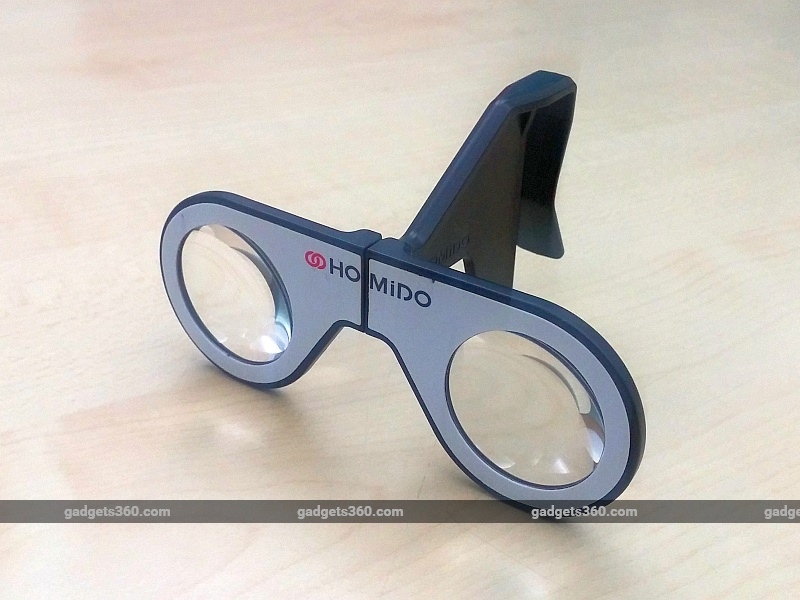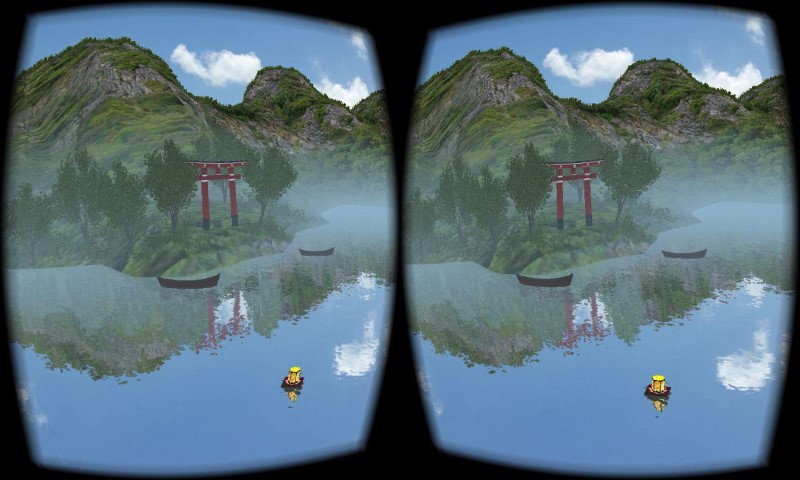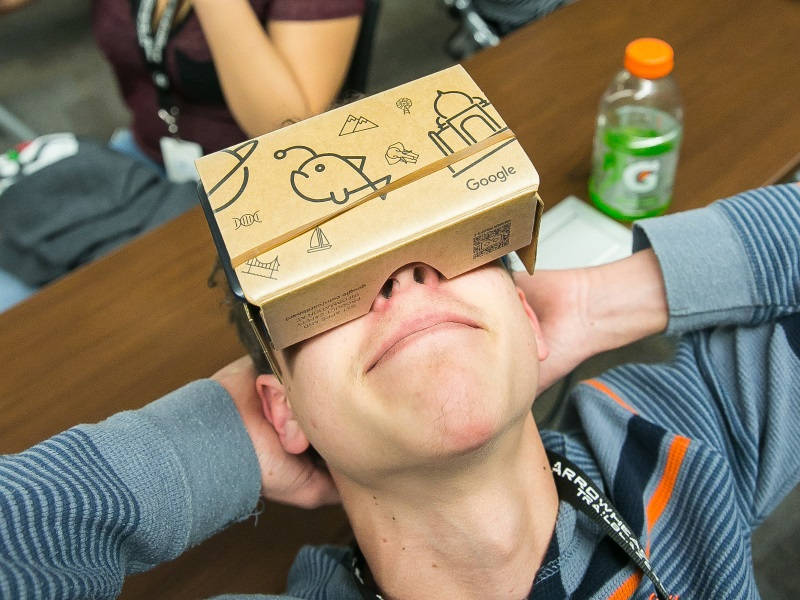After a number of innovations in home entertainment technology, the
latest claimant to our attention is virtual reality. With more and more
manufacturers moving to bring it to the mainstream, the technology has
taken a leap forward, and today, with virtual reality, you can
experience entirely new visions of movies, and explore landscapes as if
you were right there. More and more manufacturers are now making
headsets to experience VR, but how much of this excitement will
translate into actual users?
At the start of the year, we saw
different varieties of headsets at the Consumer Electronics Show,
ranging in complexity from basic sets that were like Google Cardboard,
while there were also more advanced products that were closer to the
Facebook-owned Oculus Rift.
The Oculus Rift will start shipping
this month, and the Gear VR is already on sale worldwide and in India.
HTC and Valve's Vive headset is will start shipping soon, and we'll know
more about Sony's PlayStation VR headset too. The rat race has begun,
but the understanding of VR amongst consumers is still very limited.
VR is new, so are the users
VR
is a concept that can't be easily communicated through video ads or
descriptive text. To understand it, you've got to experience it. That
said, the problem is that our first experiences with VR are usually not
our best experience with VR. It takes a little time to understand the
mechanics of experiencing the world in virtual reality. The first few
moments when you are using a VR headset are bewildering, and you will
often just gaze forward as you try and comprehend the experience.
My
first VR experience was using the Homido Mini, a cheap and easy to use
Google Cardboard headset. Using it, I watched a 360-degree YouTube
video, and I was entranced just at the sight filling up my vision. And
then a colleague told me to look around, and the experience was like
nothing before - until I was told to turn around completely and see the
world behind me. It's a unique experience and one that's so unusual that
it would never have struck me to do so.

This is not only the case
with me but something that many others who were curious to experience
virtual reality shared. There is an unexplored side in using almost
every VR headset. Virtual reality wearables are still new to users, who
don't know what the technology means.
Even in its simplest form - a
Google Cardboard headset - VR left me amazed but there could be more
features. More advanced headsets like the Samsung Gear VR, or even
higher end ones like the HTC Vive go a step further, and as a result,
are even more confusing to newcomers.
(Also see: Samsung Gear VR Review)
And we're only at the start
of VR's journey right now. Google's Project Tango could empower mobile
devices with the ability to explore the virtual world physically by
adding a depth sensor to the phone's camera - this could be used to walk around in a virtual world with other
people.
Project Tango is currently in testing stages, but a new version of
Google Cardboard is also in the works, and could even be a standalone
headset.
You never know what to expect
Some
Android-makers, such as Lenovo and OnePlus, have their own Cardboard
headsets that are bundled or sold separately. The advantage of doing
this is that it gives them access to a readymade software ecosystem for
VR. But what's missing right now is also a universal way to use VR. The
software on your phone has some common gestures - for example, in most
phone apps, you would swipe down from the top to refresh, or pinch to
zoom. - but in VR, each app works a little differently.
(Also see: Google's Next-Generation Cardboard VR Headset Detailed: Report)
With
some, you'll keep looking at a button to select it. Some other apps use
a tap function. There are some apps that require you to use a Bluetooth
controller, and others that will work without it. The lack of
uniformity in VR apps is one thing that needs to be addressed as the
technology becomes more popular.

That's not the only area where
uniformity is lacking though. VR images are captured by stitching
together different chunks taken from multiple sources, so you can look
around in any direction. But this is never really made clear to the
user.
What I mean is that you don't know how much of an image has
been captured - whether you're looking at a 360 video in a single plane,
a spherical video, or just a 180-degree video you can look around in.
What's more, you don't know where you're supposed to look; this is fine
when you're just enjoying an experience exploring the outdoors, but in
more confined spaces it's a little clumsy.
A long race to run
Everything
that we see through the headsets, primarily supporting virtual reality,
is not real to the eyes and our mind takes couple of minutes to
understand what exactly we're seeing. So it could be said that there are
still some new sensations that our minds needs to learn to experience
VR comfortably. For now though, it can be easy to get disoriented in a
VR headset.
(Also see: Low-Cost VR Headsets Will Boost Virtual Reality in India)
Mobile World Congress saw VR as a booming technology
that is now appealing to phone manufacturers. LG came up with 360 VR,
Samsung displayed the showstoppers Gear VR and Gear 360, and HTC
hopefully secured its future with its Vive headsets.
Phone makers
are learning new ways to gather profits with their smartwatches,
cameras, and virtual reality wearables. This emphasis on non-mobile tech
that we see today is certainly an indicator of the saturation of the
mobile phones market. But VR is not going to be a quick and easy target,
and it will be a hit and miss future for most companies in the short
term.
For the latest tech news and reviews, follow Gadgets 360 on X, Facebook, WhatsApp, Threads and Google News. For the latest videos on gadgets and tech, subscribe to our YouTube channel. If you want to know everything about top influencers, follow our in-house Who'sThat360 on Instagram and YouTube.
Further reading:
CES,
CES 2016,
Consumer Electronics Show,
Google,
Google Cardboard,
Homido Mini,
HTC Vive,
Internet,
Lenovo,
LG,
LG 360 VR,
Mobile World Congress,
MWC,
MWC 2016,
OnePlus,
PlayStation VR,
Project Tango,
Samsung,
Samsung Gear 360,
Samsung Gear VR,
Sony,
Sony PlayStation VR,
Virtual Reality,
VR,
Wearables
 Nvidia GeForce RTX 5090 GPU Benchmarks Reveal Up to 46 Percent Performance Improvement: Report24 January 2025
Nvidia GeForce RTX 5090 GPU Benchmarks Reveal Up to 46 Percent Performance Improvement: Report24 January 2025 VLC Media Player Showcases AI-Powered Subtitle Generation, Translation Feature at CES 202513 January 2025
VLC Media Player Showcases AI-Powered Subtitle Generation, Translation Feature at CES 202513 January 2025 TCL Unveils Nxtpaper 4.0 Display Technology, Nxtpaper 11 Plus Tablet at CES 202510 January 2025
TCL Unveils Nxtpaper 4.0 Display Technology, Nxtpaper 11 Plus Tablet at CES 202510 January 2025 Omi AI Companion Unveiled at CES 2025, Could Be Able to Read Users’ Thoughts in the Future9 January 2025
Omi AI Companion Unveiled at CES 2025, Could Be Able to Read Users’ Thoughts in the Future9 January 2025 CES 2025: Dolby Expands Atmos Availability and Introduces Dolby Vision for Cars9 January 2025
CES 2025: Dolby Expands Atmos Availability and Introduces Dolby Vision for Cars9 January 2025

![Gadgets 360 With Technical Guruji: News of the Week [March 29, 2025]](https://c.ndtvimg.com/2025-03/9cu1890s_news-of-the-week_160x120_29_March_25.jpg?downsize=180:*)












